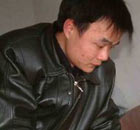News
China & Norway intensify recycling project
By Wang Danna (China Daily)
Updated: 2009-12-24 07:49
 |
Large Medium Small |
Talking with Kre Helge Karstensen, chief scientist & special advisor of the Norwegian Foundation for Scientific & Industrial Research (SINTEF), you cannot help but be impressed by his enthusiasm for his job.
Since 2004, Kre has been heavily involved in the Environmentally Sound Management of Hazardous and Industrial Wastes in Cement Kilns in China project.
Early on Sep 28, 2006, Chinese MOFCOM and Norwegian MFA signed the project agreement . In March of 2007, Foreign Economic Cooperation Office, Ministry of Environmental Protection of the People's Republic of China (FECO) and SINTEF signed the project contract. China Research Academy of Environmental Science is as the project technical implementation agency. Chinese Building Material Academy (CBMA), Tsinghua University, pilot cement plants and local EPB are also joining the project.
Initially it was anticipated that the project would finish in spring next year, but "We have decided to extend the cooperation for another two or three years and will be looking a lot more at implementation," Kre said.
"In the past few years, we concentrated on five pilot demonstration projects in Hubei, Dalian, Beijing, Chengdu and Guangzhou. For the further cooperation, we'd like to try to involve more companies, plants and experts. We aim to have more conferences and meetings and also write more articles in the appropriate technical journals," he said.
The main goal of the project is to build regulations, technical standards and criteria of cement kiln co-processing activities for hazardous and industrial wastes under the compliance with the Stockholm and the Basel Convention.
Through practising co-processing in the five pilot demonstration kilns, increase engineering practice level, the project is expected to provide information of establishing the basis for large scale implementation of safe and environmentally sound treatment and recovery of hazardous and industrial wastes in the Chinese cement industry and promote development of cement kiln co-processing for hazardous and industrial wastes in China.
Kre said: "By learning from the experiences of other countries, we would like to make it possible for China to avoid making same mistakes made by others.
Kre said: "China is committed to using more alternative fuels and raw materials in its cement industry on a daily basis once the correct protocols are established. Making this a reality is our ultimate aim."
With the completion of the project, a blueprint for its implementation, entitled "Guidelines for the Co-processing of Hazardous Wastes in Cement Kilns", has now been sent to the relevant authorities and is expected to be speedily approved. It is expected then to provide a basic background for standard operating manual for the cement industry.
Yan Dahai, an associate professor of the Research Institute of Solid Waste Management of the Chinese Research Academy of Environment Sciences, has been involved in the project from the beginning. Commenting on the current state of play, he said: "The Guidelines represent a unified protocol for all cement plants looking to co-process hazardous wastes."
(China Daily 12/24/2009 page12)







